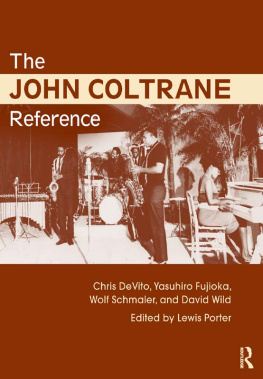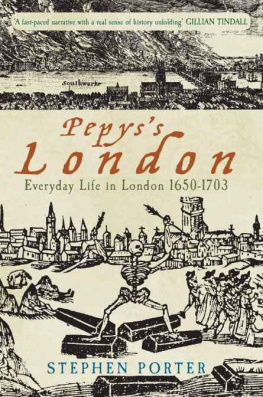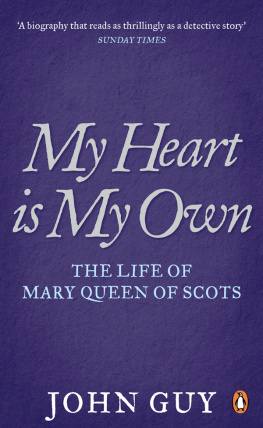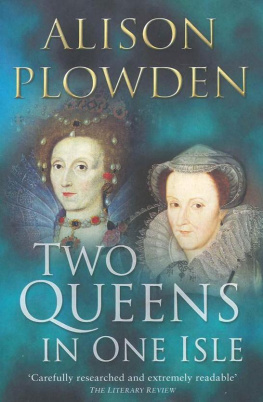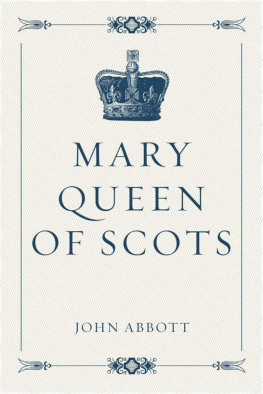
For Isobel
Authors Note
The idea for this book came to me when I realized that my knowledge of sixteenth-century history in the British Isles was heavily weighted towards England. This, I fear, is a product of the never-ending love affair that the English have with their Tudor monarchs, or, more accurately, Henry VIII and Elizabeth I. But there is a great deal more to the past of these islands than Henrys six wives and the mythical Golden Age of his younger daughter. Wales and Ireland have, of course, their own stories to tell, but it was Scotland, in particular, and the long-standing rivalry between the Tudors and the Stewarts, that intrigued me. For most English-speaking people, Mary Queen of Scots is the only Scottish ruler they have heard of, with the possible exception of Robert the Bruce. And Mary herself, the doomed, romantic queen of popular fiction and wildly inaccurate films, arrives somehow fully-formed on the English scene in Elizabeths time, with only the sketchiest of backgrounds and considerable misapprehension about the extraordinary events that had brought about her desperate flight from her homeland. But what lay behind this? The rivalry between the Tudors and the Stewarts did not start with Mary and her cousin Elizabeth. In order to understand it, I needed to go further back and to look at the relationship between England and Scotland against a longer time-frame. That is how this book was born.
The reigns of the charismatic James IV and his capable son, James V (Marys father), are not as well-known as they should be, even in Scotland, let alone south of the border. There are a number of reasons that might explain this, starting with the obvious explanation that James IVs death at the battle of Flodden in 1513 has obscured the achievements of one of the periods most interesting rulers and the long minority of James V is so confusing that it tends to overshadow his success as an adult king. Yet both men enhanced Scotlands role in Europe and neither was afraid of opposing the Tudors indeed, James V spent his life successfully evading the clutches of his uncle, Henry VIII. For the Tudors, Scotland, a country with which they shared a border, was a constant source of aggravation, and one that they did not handle well. Its alliance with France posed serious diplomatic problems, exacerbated by the legitimate claim of the descendants of James IV and his wife, Margaret Tudor, to the English throne. Mary Queen of Scots was acutely aware of this and it was her overriding aim to be acknowledged as Elizabeths heir. The tensions that underlay Anglo-Scottish relations were also played out against the backdrop of almost constant war in Europe and the growing dislocation caused by the Reformation.
The interwoven history of England and Scotland between 1485 and 1568 is one of high drama and its players are some of Britains greatest kings and queens. This is also a tale of powerful families, ambitious politicians and churchmen, of battles and intrigue, murder, rape and betrayal, of splendid courts and sibling rivalries. And, despite the prevalence of women rulers in the sixteenth century, it shows how difficult it was to be queen, whether a consort or a ruler in ones own right.
Over the years, Scottish historians have been somewhat guilty, perhaps, of keeping their history to themselves. I hope they will not be too disgruntled by an Englishwomans attempts to give the Stewart monarchs their due in sixteenth-century Britain. The outcome of the referendum on Scottish independence will decide whether Britain is once again divided. One wonders what Mary Queen of Scots would have thought. Her detractors would, of course, argue that she had her own dynastic interests at heart rather than those of Scotland itself.
Writing this book has been a long journey and I would like to thank all of those who have helped me along the way. Dr Sean Cunningham at the National Archives at Kew spent time with me going over key documents and Dr Julian Goodare at the University of Edinburgh was generous in discussing ideas, also saving me from a number of errors in the section on Marys personal rule. Research in Scotland has been one of the great pleasures of this experience and I must acknowledge the friendliness and willingness to help of the staffs of the National Library of Scotland and the National Archives of Scotland as well as those in numerous fascinating buildings managed by Historic Scotland and the National Trust for Scotland. In England, the librarians of the London Library were always efficient and welcoming, as were their counterparts in the British Library and the staff of the National Archives. Georgina Morley, my editor at Macmillan, has been as enthusiastic as ever, ably assisted by Tania Wilde, who saw the book through its production stages. I should also like to thank Lorraine Green for her meticulous copy-editing. My agent, Andrew Lownie, continues to provide his unobtrusive but vital support. Above all, I should like, once more, to acknowledge the immense help given by my husband, George, in holding things together while I shut myself away and wrote.
L INDA P ORTER
January 2013
Conventions and Conversions
Quotations used in this book are from both English and Scottish sources. Sixteenth-century Scots was a separate language, though it shared a number of English words. In most cases, spelling has been modernized but the quotations themselves have not, as I believe that we should let our ancestors speak for themselves.
Monetary equivalents are impossible to give accurately and are disliked by purists. I have used the Measuringworth.com websites 2010 RPI figures to give what is intended as an indication, to todays reader, of the larger sums of money involved. It should be remembered that the Scottish pound was worth about one-third of the English pound in the 1530s. According to Andrea Thomas in her book The Princelie Majestie (Edinburgh, 2005), the French crown was worth about one Scottish pound and there were approximately two and a quarter livres tournois to the Scottish pound.
Prologue

L EITH H ARBOUR , S COTLAND , 19 A UGUST 1561
The chilly summer morning brought only a muffled and impenetrable dawn. A sea mist, or haar, as it was known locally, enveloped the coastline, completely obscuring two galleys that had sailed unannounced into Edinburghs port on the Firth of Forth. In the memory of man, that day of the year, was never seen a more dolorous face of the heaven... Besides the wet and corruption of the air, the mist was so thick and so dark that scarce might any man espy another the length of two pair of boots. The sun was not seen to shine two days before, nor two days after. That forewarning God gave unto us; but alas, the most part were blind.
If such gloomy premonitions were still far from the thoughts of most of the passengers on the two vessels, one, at least, made no secret of the fact that she had undertaken the voyage with mixed emotions. On board, and very much the centre of attention, as she had been all her life, was Mary Stewart. An unusually tall young woman of eighteen, regal in bearing and acknowledged for her charm and warmth, she had been a queen since she was six days old. Accustomed to being fted and adored, she was gentle by nature and had given orders that the lash was not to be used on the rowers during the crossing. But she remained convinced that monarchs were divinely appointed and was always supremely conscious of her royal status. In matters of faith she was conservative, though not obsessively so. Raised in the Catholic religion of her ancestors (and the majority of the population in France, her adopted country), Mary had never known her beliefs rejected or her right to command the devoted loyalty of those around her questioned. Neither education nor experience had in any way prepared this undoubtedly intelligent girl for the challenges that lay ahead.
Next page

